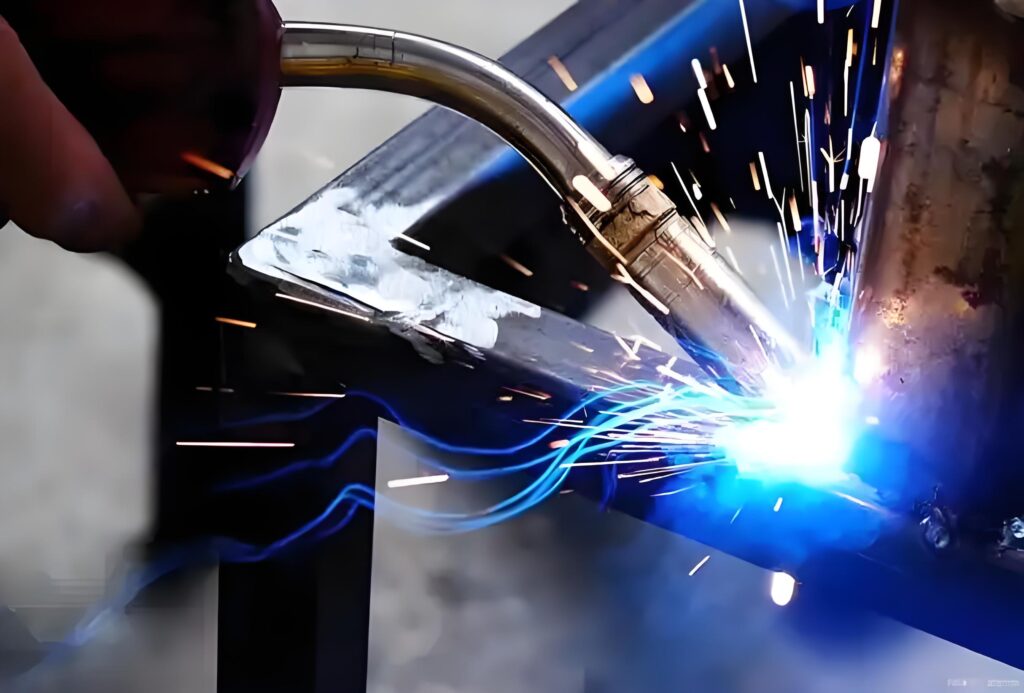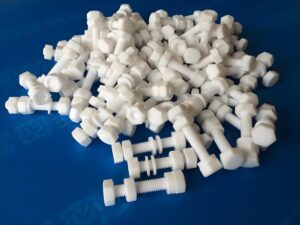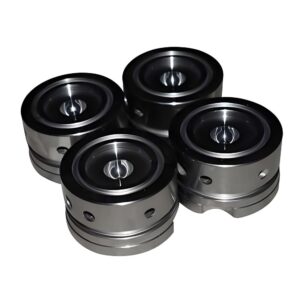Stainless steel is a versatile and widely used material in industries ranging from construction to medical device manufacturing. Its durability, corrosion resistance, and aesthetic appeal make it a go-to choice for countless applications. However, one critical property that often comes up in machining and manufacturing is the melting point of stainless steel. This blog post dives into what the melting point of stainless steel is, why it matters, how it’s determined, and the factors that influence it. Whether you’re new to the industry or a seasoned professional, this guide is designed to be clear, engaging, and informative.
What Is the Melting Point of Stainless Steel?
The melting point of a material is the temperature at which it transitions from a solid to a liquid state. For stainless steel, this isn’t a single, fixed number because stainless steel is an alloy—a mixture of iron, chromium, nickel, and other elements. The exact composition of these elements varies depending on the grade of stainless steel, which directly affects its melting point.
Generally, the melting point of stainless steel ranges between 1,370°C and 1,510°C (2,500°F to 2,750°F). This range depends on the specific alloy and its chemical makeup. For example, different grades like 304, 316, or 420 have slightly different melting points due to variations in their composition. Understanding these differences is key for industries like machining, where precise temperature control is critical.
Why Are Melting Points of Stainless Steel Important?
The melting point of stainless steel is a crucial factor in many industrial processes. Here’s why it matters:
- Manufacturing and Machining: In processes like welding, casting, or forging, knowing the melting point ensures that the material is heated to the right temperature without compromising its structural integrity. Overheating can weaken the steel or alter its properties.
- Material Selection: Different stainless steel grades are chosen based on their melting points and performance under high temperatures. For instance, components exposed to extreme heat, like those in aerospace or energy sectors, require grades with higher melting points.
- Safety and Efficiency: Understanding the melting point helps prevent equipment damage and ensures worker safety by avoiding unexpected material failures during high-temperature operations.
- Cost Efficiency: Using the right stainless steel grade for a specific application reduces waste and optimizes production processes, saving time and money.
For anyone working with stainless steel, whether in a machine shop or a large-scale manufacturing plant, knowing the melting point is essential for achieving high-quality results.
Melting Temperature of Stainless Steel
The melt point of stainless steel varies across its different grades. Below, we explore the melting points of some of the most common stainless steel grades used in machining and other industries.
Melting Point of Stainless Steel 304
Stainless steel 304 is one of the most widely used grades, known for its excellent corrosion resistance and versatility. It’s commonly found in kitchen equipment, automotive parts, and architectural structures. The melting point of stainless steel 304 is approximately 1,400°C to 1,455°C (2,550°F to 2,650°F). This range makes it suitable for applications that don’t require extreme heat resistance but still demand durability and strength.
Melting Point of Stainless Steel 316
Stainless steel 316 is often used in harsher environments, such as marine or chemical processing industries, due to its superior corrosion resistance. Its melting point is slightly lower than 304, ranging from 1,370°C to 1,400°C (2,500°F to 2,550°F). The addition of molybdenum in 316 enhances its resistance to pitting and corrosion but slightly lowers its melting point compared to 304.
Melting Point of Stainless Steel 316L
Stainless steel 316L is a low-carbon version of 316, often used in medical devices and food processing equipment. Its melting point is similar to 316, ranging from 1,370°C to 1,400°C (2,500°F to 2,550°F). The lower carbon content improves weldability but doesn’t significantly alter the melting point.
Melting Point of Stainless Steel 420
Stainless steel 420 is a martensitic grade, known for its hardness and wear resistance, making it ideal for cutlery, surgical instruments, and molds. Its melting point is slightly higher, ranging from 1,450°C to 1,510°C (2,650°F to 2,750°F). The higher carbon content in 420 contributes to its elevated melting point and strength.
Each of these grades serves specific purposes, and understanding their melting points helps manufacturers choose the right material for their projects.
How to Determine the Melting Point of Stainless Steel
Determining the melting point of stainless steel isn’t something you’d typically do in a casual setting—it requires specialized equipment and expertise. However, here’s a simplified explanation of how it’s done in industrial or laboratory settings:
Laboratory Testing
In a controlled environment, scientists use tools like differential scanning calorimetry (DSC) or thermogravimetric analysis (TGA) to measure the melting point. These methods involve heating a small sample of stainless steel and monitoring the temperature at which it begins to melt. The equipment detects changes in the material’s physical properties, providing precise data.
Industrial Observations
In manufacturing, the melting point is often inferred from the alloy’s composition and known standards. For example, material data sheets provided by steel suppliers list the melting points for specific grades like 304 or 316. These values are based on extensive testing and are reliable for most applications.
Practical Considerations
For machinists and engineers, the melting point is more of a reference point. During processes like welding or casting, they use equipment calibrated to stay below the melting point to avoid damaging the material. For instance, welding stainless steel 304 requires temperatures well below its melting point to maintain its corrosion resistance.
Factors That Affect a Metal’s Melting Point

The melt point of stainless steel isn’t just about the material itself—it’s influenced by several factors. Understanding these factors can help industries optimize their processes and select the right materials.
Alloy Composition
The most significant factor affecting the melting point is the alloy’s composition. Stainless steel contains varying amounts of iron, chromium, nickel, molybdenum, and other elements. For example:
- Chromium increases corrosion resistance but can slightly lower the melting point.
- Nickel enhances toughness and can raise or lower the melting point depending on its concentration.
- Carbon content, as seen in stainless steel 420, tends to increase the melting point.
Each grade’s unique blend of elements determines its specific melting range.
Impurities and Contaminants
Impurities in stainless steel, such as sulfur or phosphorus, can lower the melting point. High-quality stainless steel is carefully refined to minimize these impurities, ensuring a more consistent melting point and better performance in high-temperature applications.
Manufacturing Process
The way stainless steel is processed can indirectly affect its melting point. For instance, heat treatments or cold working can alter the microstructure of the steel, which may influence how it behaves under high temperatures. While these processes don’t change the melting point directly, they can affect how the material responds to heat.
Environmental Conditions
External factors like pressure or the presence of other materials can also play a role. In high-pressure environments, the melting point of stainless steel may slightly increase. However, this is more relevant in extreme conditions, such as those found in aerospace or deep-sea applications.
Grain Size and Structure
The microstructure of stainless steel, including its grain size, can influence how it handles heat. Finer grains, achieved through specific manufacturing techniques, can improve the material’s strength but may have a subtle effect on its melting behavior.
Applications of Stainless Steel Melting Points in Machining

In the machining industry, understanding the melting point of stainless steel is critical for several reasons. For example:
- Welding: Welders need to know the melting point to set the right temperature for joining stainless steel parts without causing warping or weakening.
- Casting: In casting processes, molten stainless steel is poured into molds. Knowing the melting point ensures the steel is heated to the correct temperature for smooth flow and solidification.
- Heat Treatment: Heat treatments like annealing or tempering are performed at specific temperatures below the melting point to enhance the steel’s properties.
By selecting the appropriate grade and understanding its melting point, machinists can achieve precision and durability in their products.
Common Myths About Stainless Steel Melting Points
There are a few misconceptions about stainless steel and its melting point that are worth addressing:
- Myth 1: All Stainless Steel Has the Same Melting Point As discussed, different grades like 304, 316, 316L, and 420 have distinct melting points due to their unique compositions. Assuming they’re all the same can lead to costly mistakes in manufacturing.
- Myth 2: Melting Point Is the Only Factor in High-Temperature Applications While the melting point is important, other properties like thermal conductivity, oxidation resistance, and creep strength also play a role in how stainless steel performs under heat.
- Myth 3: Stainless Steel Doesn’t Melt in Everyday Use While stainless steel is highly heat-resistant, it’s not immune to melting. In extreme conditions, such as industrial furnaces or fires, it can reach its melting point and lose structural integrity.
Clearing up these myths helps ensure that stainless steel is used correctly in various applications.
Choosing the Right Stainless Steel for Your Needs
When selecting a stainless steel grade for a project, consider the following:
- Operating Temperature: If your application involves high temperatures, choose a grade with a higher melting point, like 420, or one designed for heat resistance.
- Corrosion Resistance: For environments with moisture or chemicals, grades like 316 or 316L are better suited due to their molybdenum content.
- Machinability: Some grades, like 304, are easier to machine than others, which can impact production efficiency.
- Cost: Higher-performance grades like 316 are more expensive than 304. Balance performance with budget constraints.
Consulting with a trusted supplier or machining expert can help you make an informed decision.
How Precionn Supports Your Stainless Steel Needs
At Precionn, we understand the importance of selecting the right stainless steel grade for your machining projects. As a leader in the precision machining industry, our team specializes in working with various stainless steel grades, including 304, 316, 316L, and 420, to deliver high-quality components tailored to your needs. Whether you’re looking for parts that withstand high temperatures or require exceptional corrosion resistance, Precionn’s expertise ensures precision and reliability. Visit our website at Precionn’s official site to learn more about our services and how we can support your next project.




